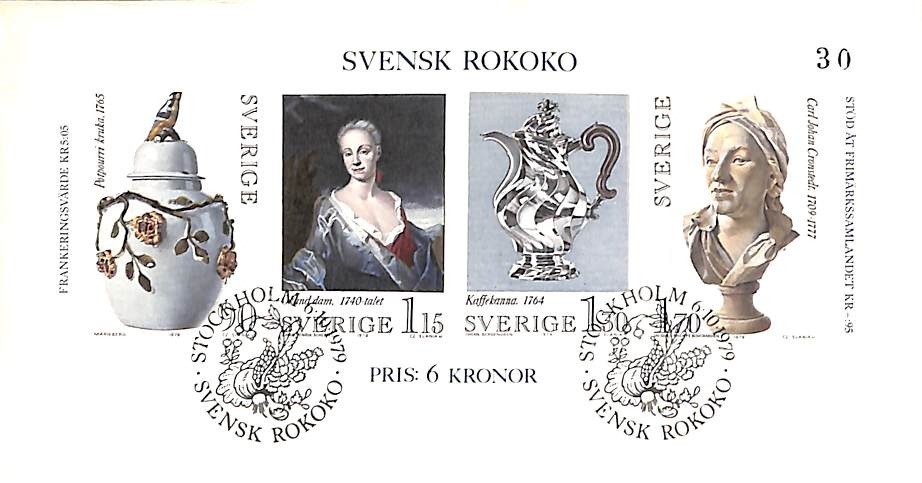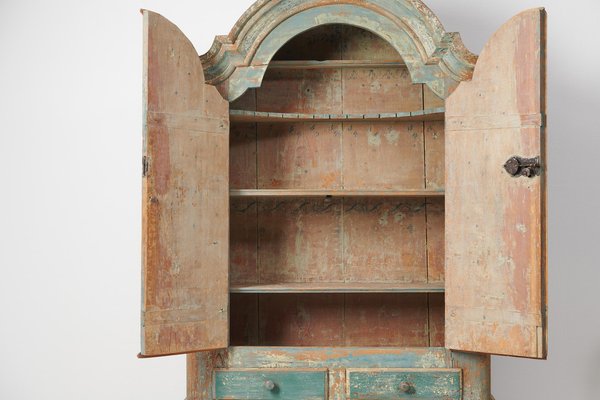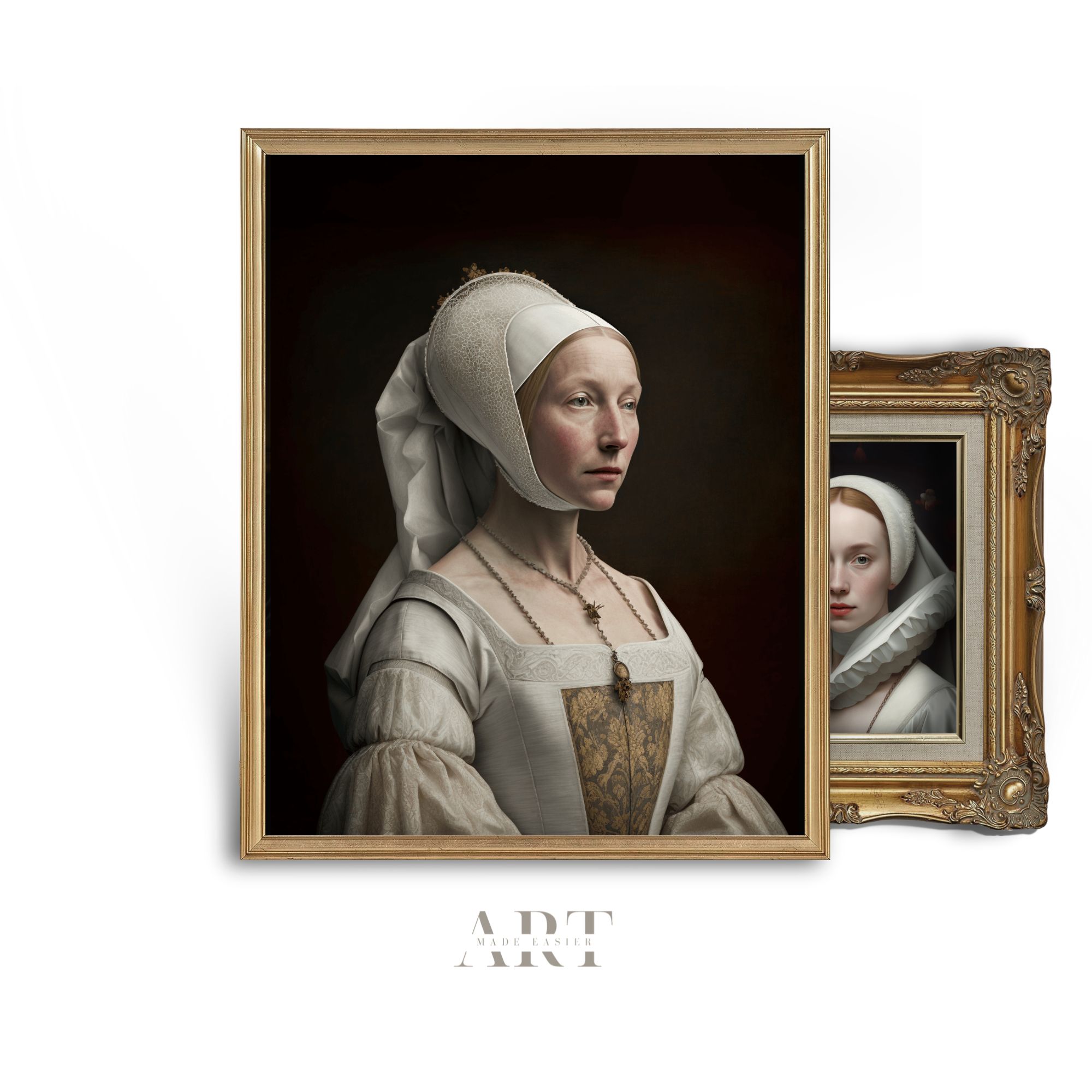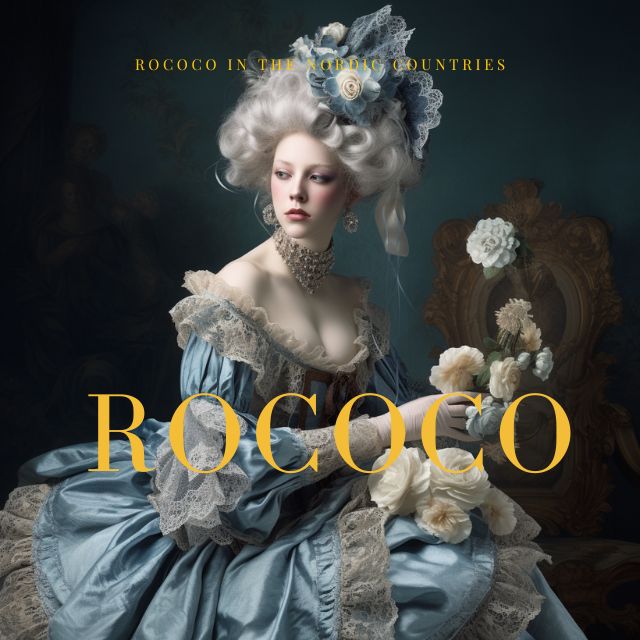
Rococo In The Nordic Countries
The Rococo style, which emerged in the early 18th century, originated in France and quickly spread throughout Europe, including the Nordic countries. While the Nordic countries, comprising Denmark, Sweden, Norway, Finland, and Iceland, were influenced by the broader European Rococo movement, they also showcased distinctive characteristics and adaptations that set them apart.
Danish Rococo: In Denmark, Rococo art and architecture were strongly influenced by French and German styles. Danish Rococo emphasized elegance, refinement, and symmetry. Architects like Nicolai Eigtved played a crucial role in shaping the Danish Rococo style, evident in buildings such as the royal palaces of Amalienborg and Christiansborg. Danish furniture of this period featured delicate, curving lines, often adorned with intricate carvings and gilding.
Swedish Rococo: Swedish Rococo, known as the Gustavian style, developed later than in other Nordic countries. It was influenced by French Rococo and neoclassical elements. Gustavian interiors showcased light colors, restrained ornamentation, and a preference for straight lines, reflecting a shift towards neoclassicism. The Swedish king, Gustav III, played a significant role in promoting this style, and it became synonymous with elegance and sophistication in Sweden.

Norwegian Rococo: Norway was under Danish rule during the height of the Rococo period, so Danish Rococo influences were prominent. However, Norwegian craftsmen and artisans infused their own regional characteristics into the style. Norwegian Rococo featured intricate woodcarvings, often depicting local flora and fauna, as well as a preference for vibrant colors. Examples can be seen in the elaborate woodwork found in stave churches and traditional rural buildings.
Finnish Rococo: Finland, then part of the Kingdom of Sweden, adopted Swedish Rococo influences. The Finnish interpretation of Rococo emphasized simplicity, lightness, and elegance. Finnish architects and craftsmen integrated Swedish neoclassical elements into their Rococo designs, reflecting a shift towards classicism. The famed architect Carl Fredrik Adelcrantz played a significant role in shaping Finnish Rococo.
Icelandic Rococo: As an isolated island nation, Iceland’s exposure to the Rococo style was relatively limited. However, the few examples of Rococo art and architecture in Iceland demonstrate a fusion of local influences with European Rococo. The Icelandic interpretation tended to incorporate simpler ornamentation and more rustic elements, often reflecting the country’s natural surroundings.
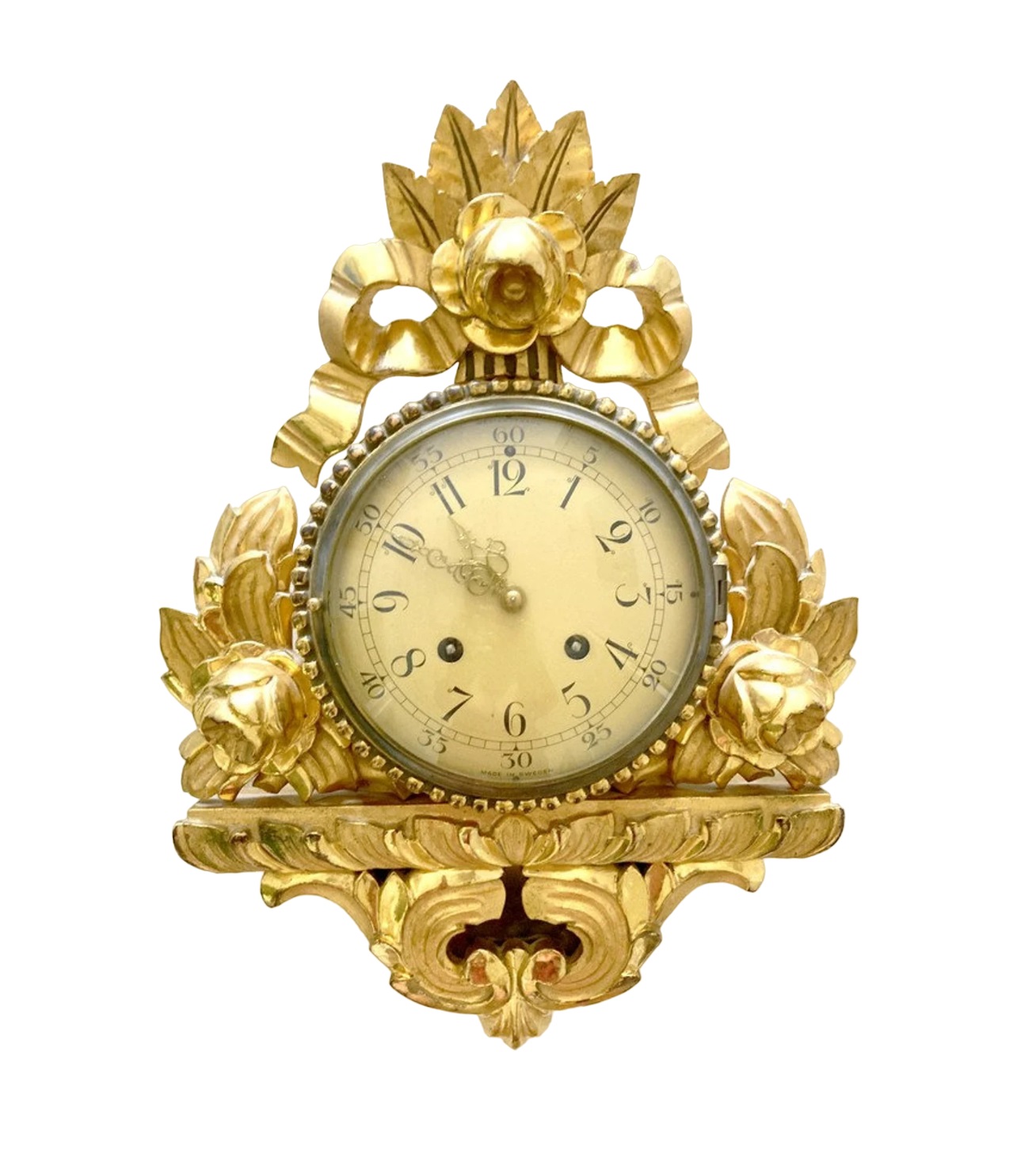
Antique Westerstrand Swedish Rococo Gilt Carved Wood CARTEL WALL CLOCK – Etsy
Overall, while the Rococo style in the Nordic countries shared common European influences, each country infused their own regional characteristics, resulting in distinct variations. Danish Rococo emphasized elegance and symmetry, Swedish Rococo transitioned towards neoclassicism, Norwegian Rococo incorporated local woodcarvings, Finnish Rococo leaned towards simplicity, and Icelandic Rococo fused local elements with European style. These variations highlight the diverse interpretations and adaptations of Rococo across the Nordic region.
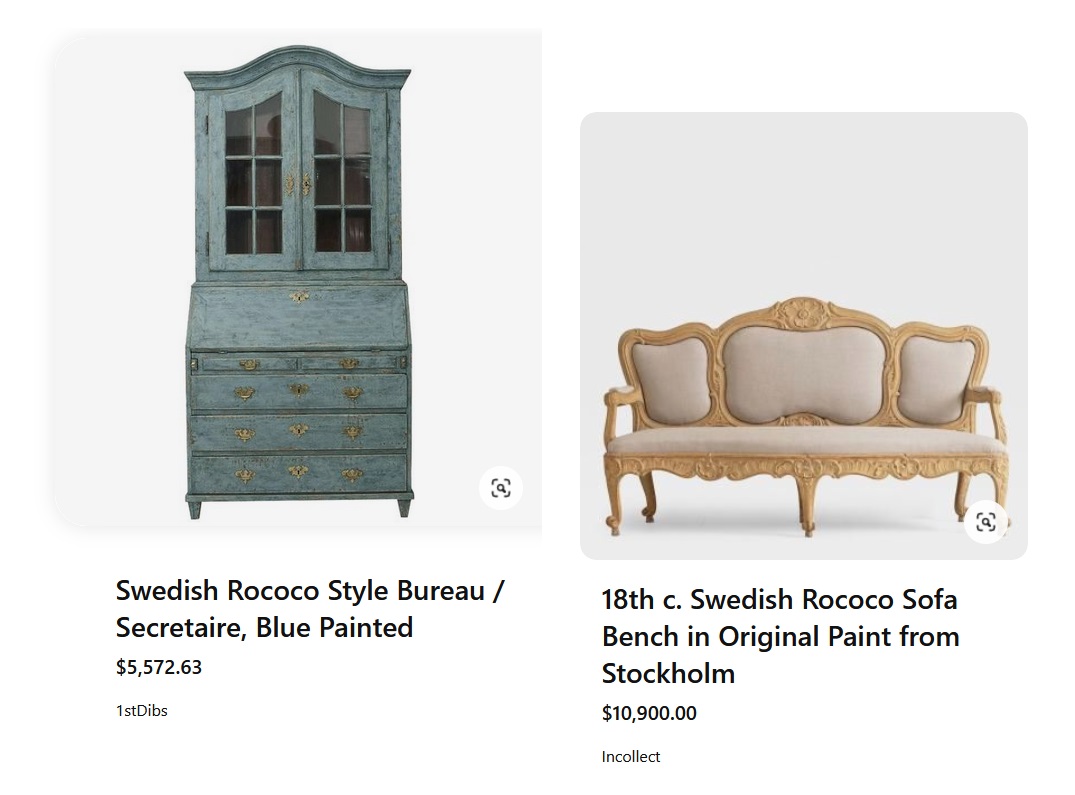
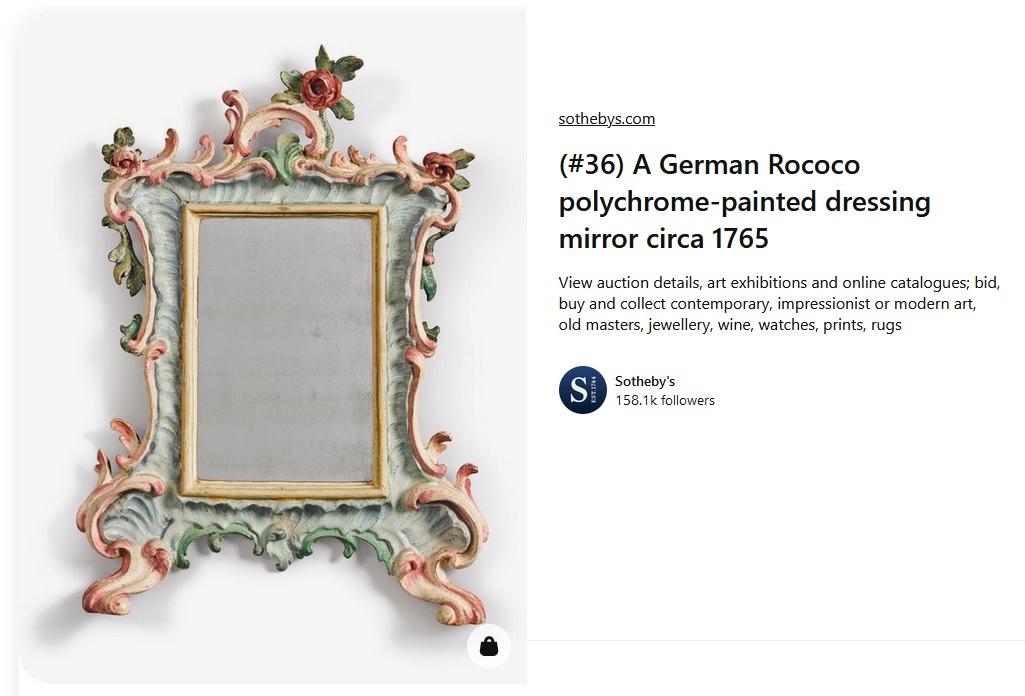
sothebys.com
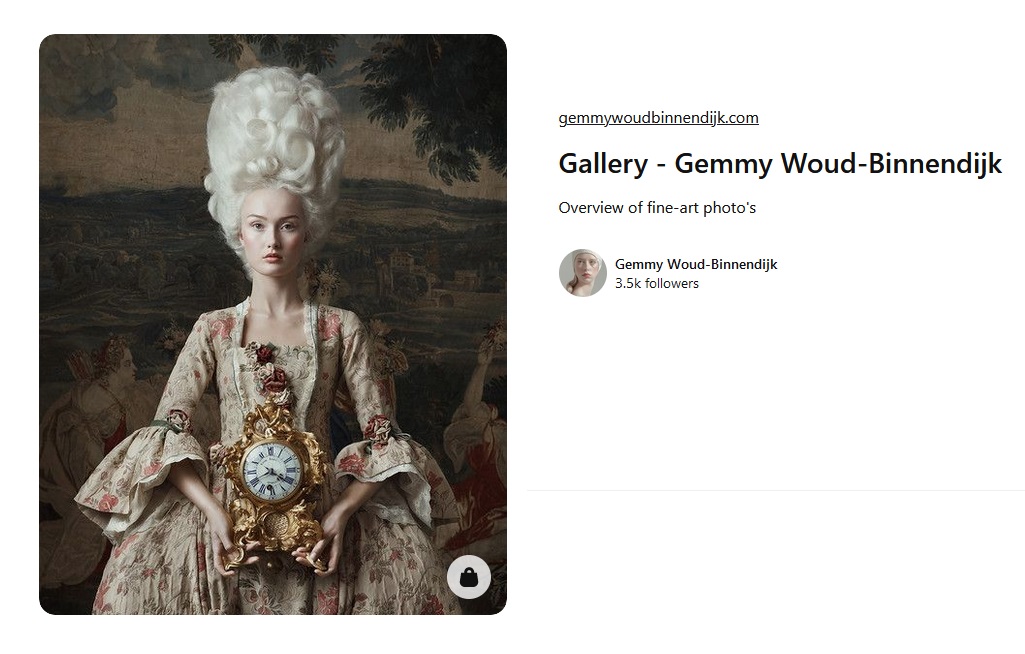
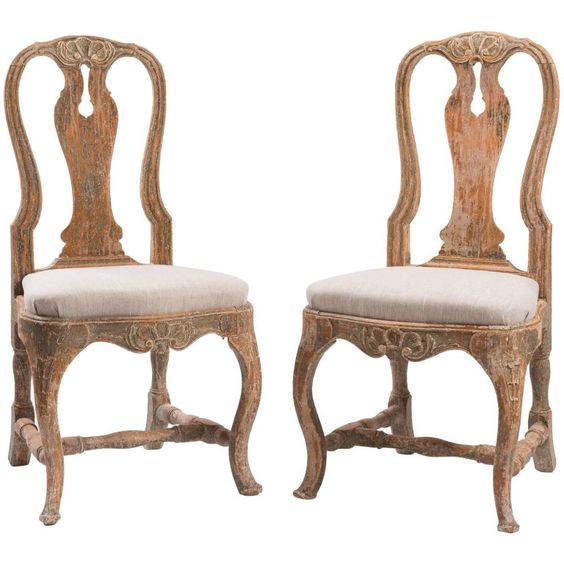
18th Century Swedish Rococo Chairs
About A pair of Swedish Rococo chairs with nice proportions and wooden Rococo carvings. Scraped to original paint and original seats with new linen. Manufactured in Stockholm, Sweden, circa 1760.
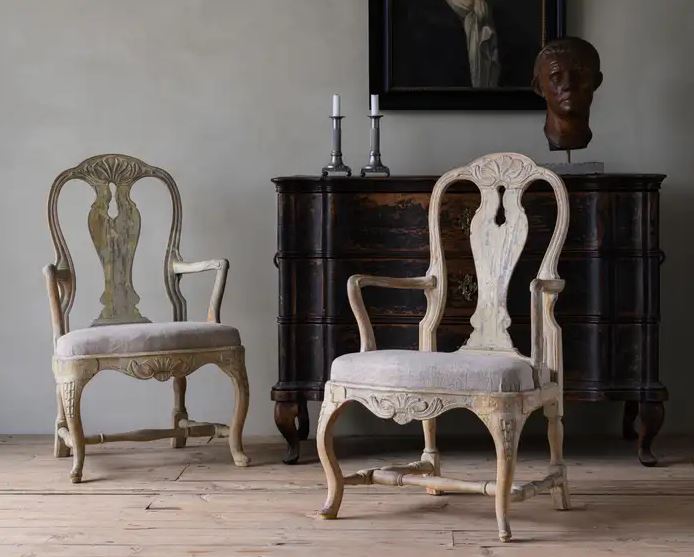
1stdibs Wood Rococo Swedish Armchair $9,200.00
………………
The Rococo style, characterized by its ornate and playful aesthetic, originated in France in the early 18th century and spread throughout Europe. While the Rococo style had a significant impact on the arts and architecture of several Nordic countries, including Sweden, Denmark, and Norway, it was adapted and interpreted differently in each region. Let’s explore the characteristics and variations of the Rococo style in the Nordic countries:
Sweden:
In Sweden, the Rococo style, known as “Rokoko,” emerged in the mid-18th century. Swedish Rococo was influenced by the French Rococo but had a distinctive national character. It incorporated elements of the Gustavian style, which focused on simplicity and neoclassical influences. Swedish Rococo emphasized lightness, elegance, and refinement. The furniture and interior design often featured delicate ornamentation, curved lines, and pastel colors. Rococo interiors in Sweden showcased painted paneling, gilded mirrors, and intricate stucco decorations.
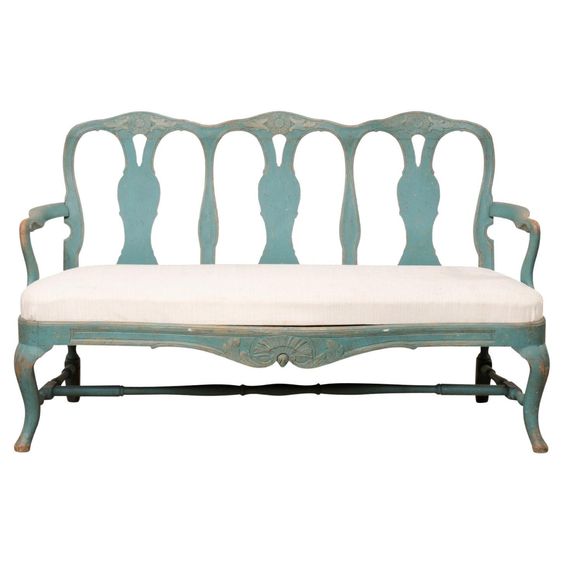
1stdibs Sofa – Period 3- Back Painted Bench Swedish Rococo Upholstery, Wood
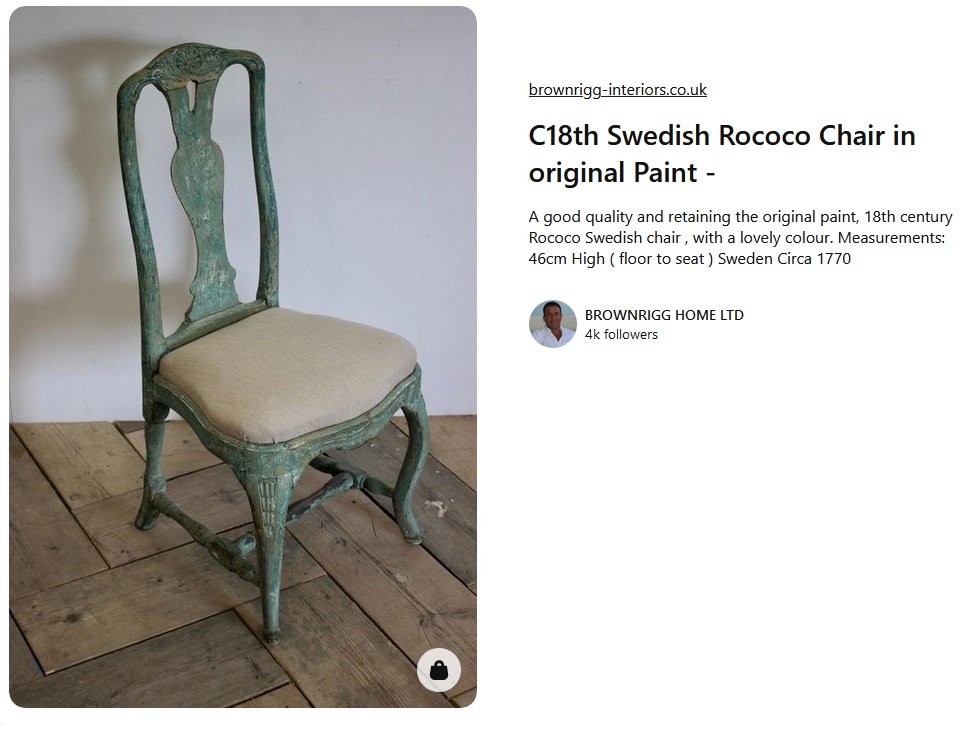
Denmark:
Denmark also embraced the Rococo style, which is known as “Rokoko” or “Rococo” in Danish. Danish Rococo emphasized asymmetry and organic forms. Furniture and interiors were characterized by intricate woodwork, curving lines, and an abundance of decorative elements like foliage, shells, and scrollwork. Danish Rococo incorporated motifs inspired by nature and often featured light and pastel colors. The royal palaces of Denmark, such as Frederiksborg Palace and Amalienborg Palace, exhibit remarkable examples of Rococo architecture and design.
Norway:
In Norway, the Rococo style, known as “Rokokko” or “Rococo” in Norwegian, found expression in both architecture and interior design. Norwegian Rococo often displayed a fusion of Rococo elements with traditional Norwegian craftsmanship and folk art. The Rococo interiors in Norway featured intricate woodcarvings, especially in the form of acanthus leaves, floral motifs, and swirling patterns. Buildings such as the Royal Palace in Oslo exemplify the Rococo influence in Norwegian architecture.
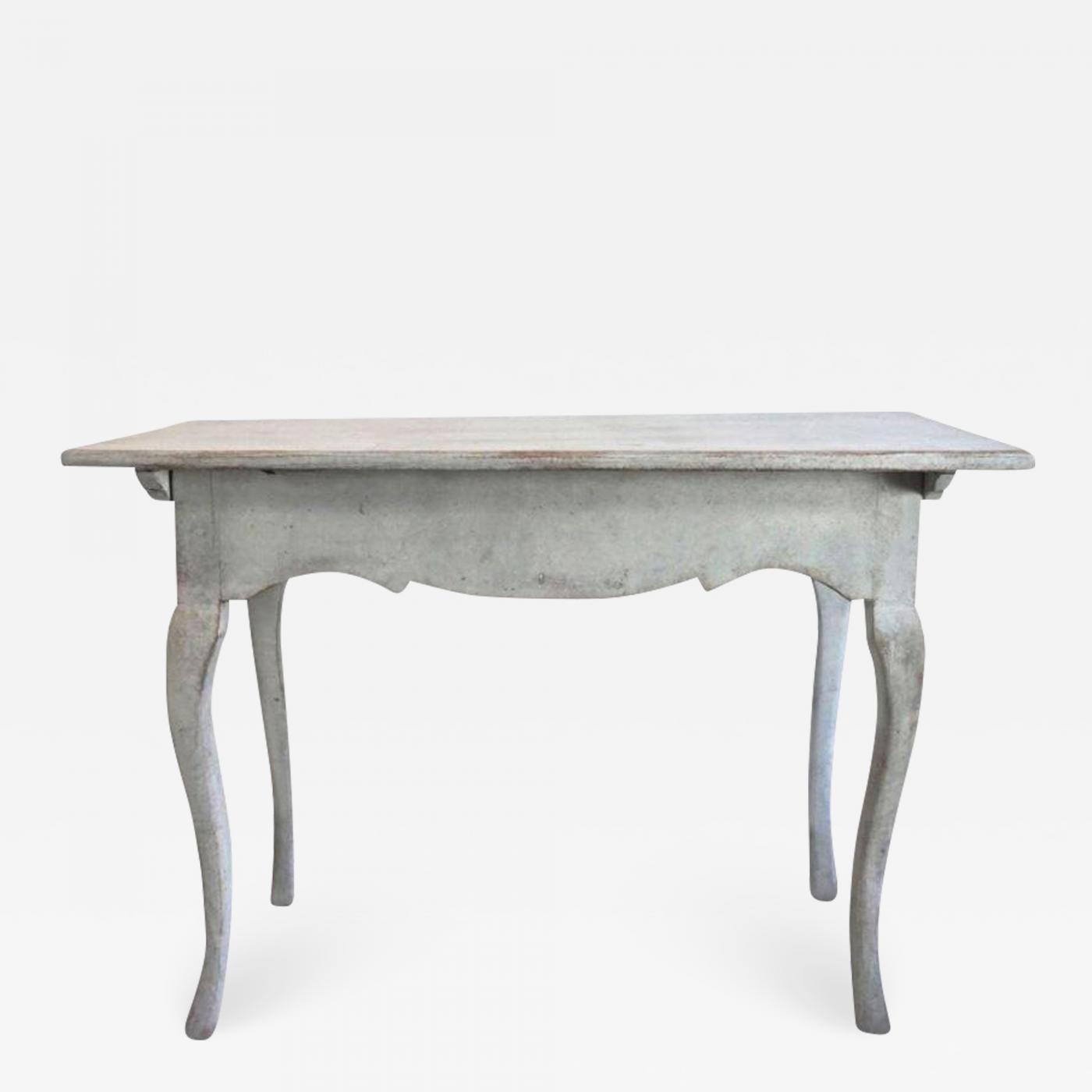
18TH C SWEDISH ROCOCO SIDE TABLE – In Collect
Despite these regional variations, the Nordic countries generally embraced the Rococo style as a way to demonstrate wealth, sophistication, and cultural refinement. The style was particularly popular among the nobility and upper classes, who commissioned lavish interiors, furniture, and art in the Rococo aesthetic.
It’s important to note that the Rococo style gradually gave way to neoclassical influences in the late 18th century, as tastes shifted towards simpler and more restrained forms. However, the legacy of Rococo can still be seen in many historic buildings, palaces, and museums across the Nordic countries, showcasing the region’s unique interpretation of this ornate and whimsical style.
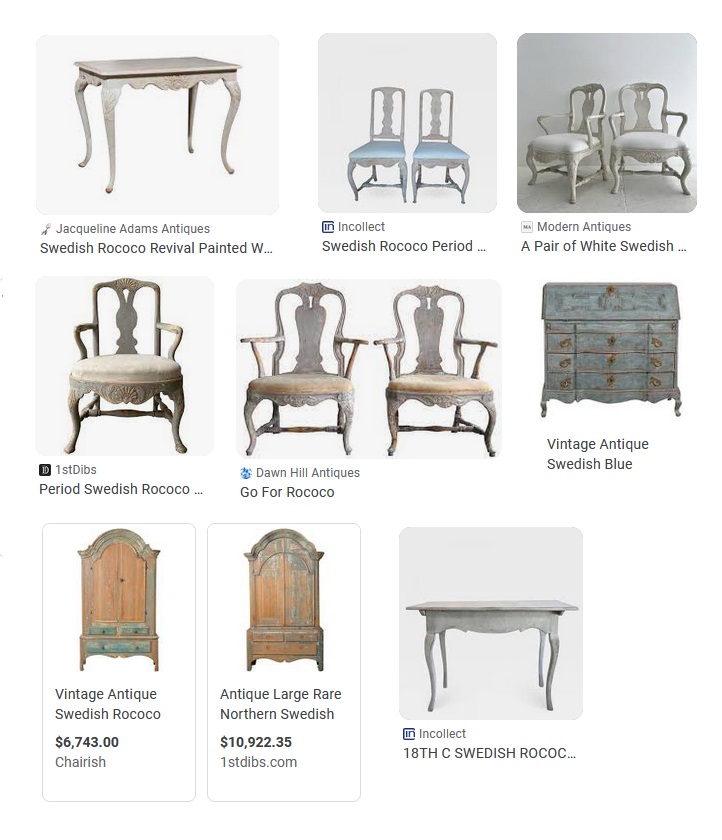
The Rococo Style in Sweden: A Delicate Blend of Elegance and Extravagance
The Rococo style, known for its ornate and whimsical designs, flourished in Sweden during the 18th century. This period, often referred to as the Gustavian era, was a time of great artistic and cultural refinement in the country. While the Rococo movement originated in France, it quickly spread throughout Europe, leaving its indelible mark on Swedish art, architecture, and interior design.
Stamp 1979, Sweden Swedish rococo s/s, 1979 – Collecting Stamps – PostBeeld – Online Stamp Shop – Collecting
In Sweden, the Rococo style was embraced by the aristocracy and the wealthy bourgeoisie, who sought to emulate the elegance and opulence associated with the French court. This period coincided with the reign of King Gustav III, whose personal taste and influence played a pivotal role in shaping the Swedish interpretation of Rococo.
One of the key characteristics of Rococo design is its emphasis on asymmetry and intricate detailing. Swedish Rococo architecture featured gracefully curved facades, ornamental embellishments, and elaborate stucco work. The interiors of buildings were adorned with delicate motifs, including shells, scrolls, flowers, and foliage. Furniture and decorative objects were often crafted from light-colored woods, such as birch or beech, and embellished with gilded accents.
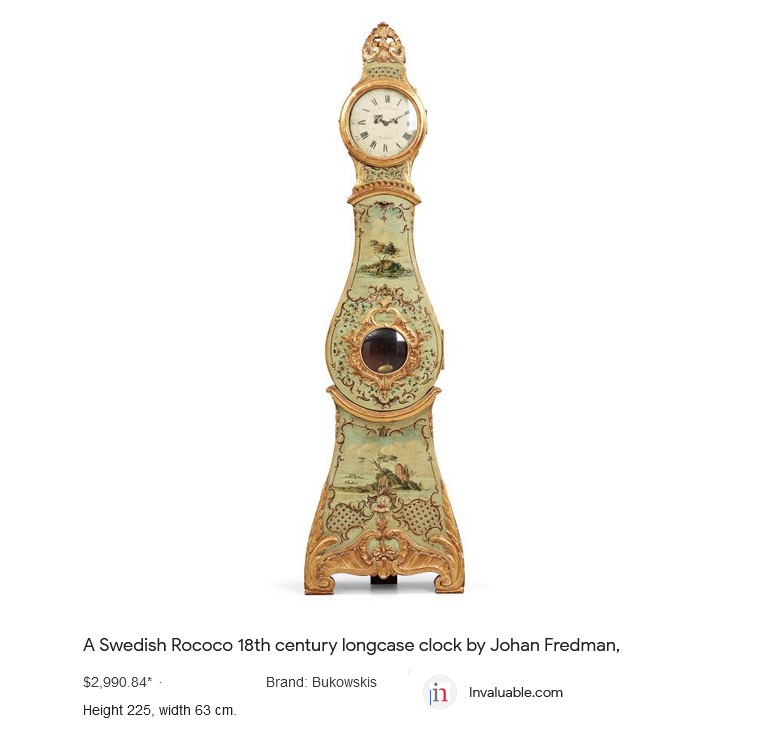
The Rococo style also had a significant impact on Swedish craftsmanship. Master artisans excelled in cabinetmaking, producing exquisite furniture pieces characterized by their lightness and grace. These pieces often featured slender legs, delicate carvings, and upholstery in soft, pastel-colored fabrics. Rococo-style mirrors, chandeliers, and porcelain became highly sought after, adding a touch of sophistication to the interiors.
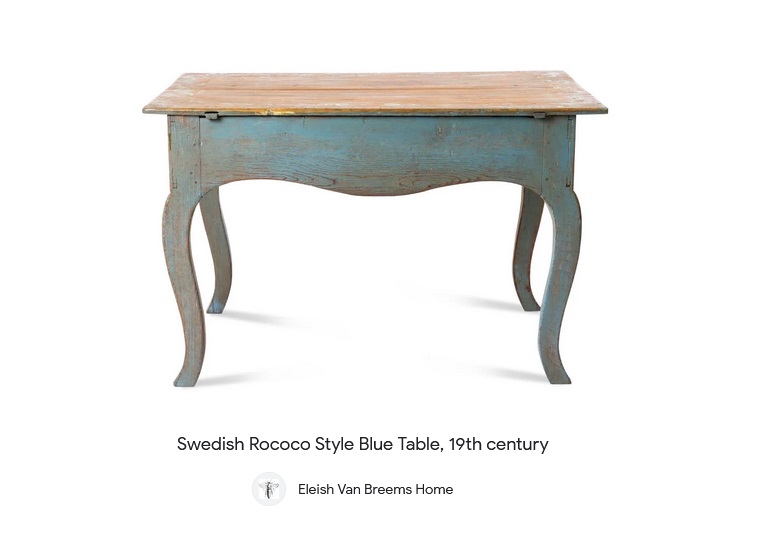
One prominent example of Swedish Rococo architecture is the Royal Palace in Stockholm. Designed by architect Nicodemus Tessin the Younger, it showcases the elegance and grandeur associated with the style. The interiors of the palace, particularly the Royal Apartments, feature elaborately decorated rooms with intricate stucco work, ornate furnishings, and beautiful tapestries.
While Rococo design was prevalent in the royal palaces and the homes of the upper class, its influence extended beyond the elite. The Rococo aesthetic trickled down to the middle class, with merchants and professionals incorporating elements of the style into their homes. This democratization of Rococo design contributed to its widespread popularity and enduring legacy in Swedish culture.
The Rococo era in Sweden was not solely focused on superficial beauty and decoration. It also fostered intellectual and cultural advancements. King Gustav III, a passionate patron of the arts, established the Royal Swedish Academy of Fine Arts and promoted the development of Swedish literature and theater. This period witnessed the rise of influential Swedish artists and writers, including Carl Fredrik Adelcrantz, Carl Michael Bellman, and Johan Tobias Sergel.
Antique Swedish Rococo Country Cabinet
Despite its popularity, the Rococo style eventually fell out of favor in Sweden. In the late 18th century, a shift towards neoclassicism, inspired by ancient Greek and Roman aesthetics, took hold. This transition was marked by simpler, more restrained designs that favored symmetry and clean lines over the elaborate ornamentation of Rococo.
However, the Rococo style’s impact on Swedish culture remains significant to this day. Many architectural landmarks and historical buildings continue to showcase the delicate and intricate beauty of the Rococo era. The influence of Rococo can also be seen in contemporary Swedish design, with echoes of its graceful lines and decorative motifs found in furniture, textiles, and decorative objects.
In conclusion, the Rococo style in Sweden during the 18th century brought a sense of elegance, luxury, and artistic refinement to the country. Its influence can still be seen in the architectural marvels, exquisite furniture, and decorative objects that have stood the test of time. The Rococo era in Sweden serves as a reminder of a bygone era of grandeur and artistic expression, and its legacy continues to inspire and captivate admirers of beauty and craftsmanship.
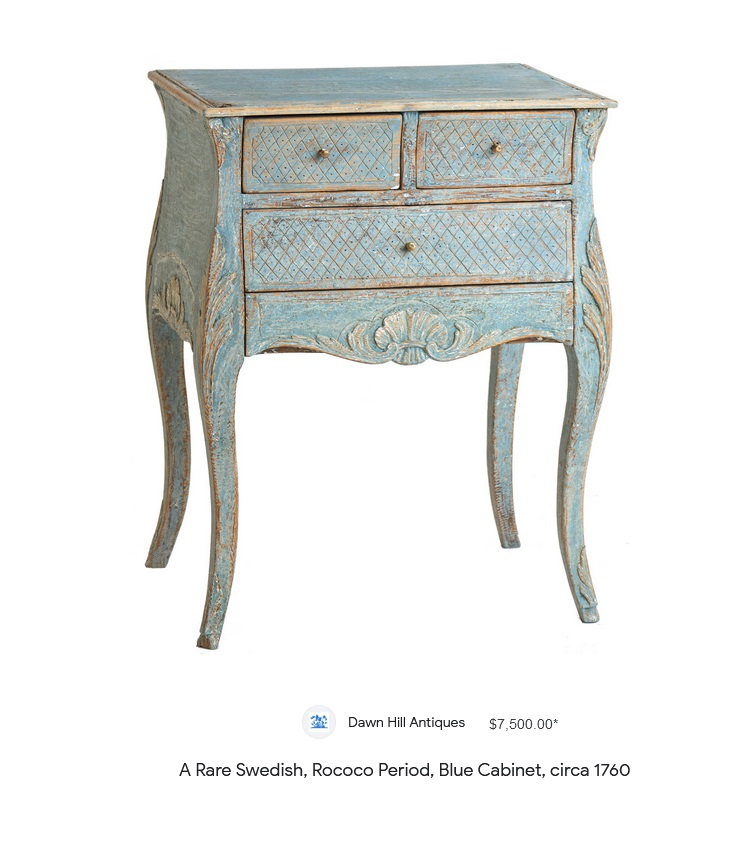
Quiet luxury inspired by 18th-century Sweden
Light - Patina - Heritage

Restoration Tools
- Matte Topcoat
- Pro Grade Brush Set
- Finishing Sealer In Matte
- Bronze Spray For Hardware
- Sticks To Everything Primer
- Dead Flat Varnish
- Stick To Everything - Matte Primer
- Transparent Aged Glaze
- Sticks To Everything Brown Primer
- Prima Transfers
- Dyke Brown Glaze
- Escutcheons
- Medallion Silicone Mold
- French Key Molds
- Portico Scroll
- Rusty Paint Finishes
Recent Posts
- 200 Swedish Antiques A Person Can Look For
- Rococo In The Nordic Countries
- For The Love Of Collecting Antiques – A Swedish Interior
- Gustavian Furniture – How to get the look – Ulla Kloster
- 3 Swedish Must Haves – Decorating A Home Around Swedish Antiques
- The Beautiful Wall Paintings Of von Echstedtska gården In Sweden
- 400 Professional Designers Picked Green As The New Color To Watch
- 5 Scandinavian Interior Design Tricks – Megan Slack
- 30 Gray Toned Paint Colors For Swedish Styled Interiors – Behr
- DIY Upper Kitchen Cabinets – Lindsay – White Buffalo Styling
- Bringing The Garden In For The Winter
- The Home Office – Why Not Make Yours Unique ?
- The Light And Airy Furniture Of Sweden
- Slipcovers Have Always Been Popular Through Time – Swedish Decorating
- The Couple Behind D. Larsson Interior and Antikhandel – Swedish Antiques
- 6 Colors You’ll Find In Every Scandinavian Home – Laura Barry
- 5 Decorating Mistakes Not To Make – By Gabrielle Savoie
- Designer Marshall Watson’s Scandinavian Newport Beach Home
- Designer Marshall Watson’s Scandinavian Summer House
- Swedish Inspired Kids Bedrooms
- 5 Kitchen Design Lessons You Can Learn from Scandinavian Interiors
- Jenny’s DIY Wide-Plank Plywood Flooring Studio Renovation
- Decor Mistakes All 20-Somethings Make
- Can I Stain Over Paint To Produce A Patina?
- Q&A With Swedish Designers Edie Van Breems and Rhonda Eleish
- How To Avoid Yellowed White Painted Furniture With General Finishes Products
- Colleen Martin, Founder of Swede Collection Tells Us Her Journey Of How She Began Reproducing Gustavian Furniture
- Expect To See More Warm Grays, Blues And Creams In Gustavian Decorating
- 8 Brands Of Gold Spray Paint Were Compared To Find The Best Color
- Essential Characteristics Of 18th Century Swedish Interiors
- Gustavian Style By Kristie Barnett
- 7 Places To Find Swedish Design For Toddlers
- Study Shows The Gustavian Period Has Defined All Tastes Through Time In Sweden
- Mix Old and New Like the Scandinavians Do- Chloe Taylor
- Swedish Furniture Design – What Makes The 1800’s So Obsessive
- 5 Pieces Of Wise Decorating Advice From Tricia Foley
- Impressive History Of Fine Swedish Table Linen
- Linen Has An Incredible History- Find Out Why……
- Life In 17th Century Norway & Sweden
- How To Select The Right Linen For Your Children’s Bedroom- Kids Room Decor Ideas
- Nordic Style Kids Bedroom Decor Ideas
- Decorator Tricia Foley’s Signature White Interiors
- 10 Tips From Interior Designer Furlow Gatewood
- Living In Norway- Norwegian Life In The 18th & 19th Centuries By Elisabeth Holte
- Investing In Mora Clocks – Expert Advice From Jo From Swedish Interior Design
- International Interior Decorating Magazines Worth Buying
- Swedish Council Of America Articles
- 5 Homes Decorated Around The Nordic Style
- Swedish Reproduction Furniture At Solgarden
- Behind The Rundale Palace in Latvia
- Nordic Style Historical Interior Decorating Books – Living Museums in Scandinavia
- Decorating Around Red- Historical Interior Design Ideas
- Florence De Dampierre Comments On Nordic Furniture In Sweden And Denmark
- 12 Designers Pick Their Favorite Paint Colors – House Beautiful
- 7 Of The Most Famous Swedish Furniture Designers And Decorators
- New Research Suggests Swedish Furniture In The 1700’s May Have Had Strong Colors
- Swedish Tripod Tilt-Top Candle Stand Tables
- Decorators Who Have Embraced The Nordic Style – 30+ Pictures
- A Look Behind Skogaholm Manor -18th century Swedish Decorating
- Decorating With Swedish Country Antiques- Darlene Peterson Buchanan
- 12 Interior Designers Pick Their Favorite Swedish Paint Colors
- 50+ Decorating Books Worth Looking At
- Swedish Decorating Inspirations In Yellow, Ivory And Beige- 50+ Pictures
- Decorating Around The Color Green – Swedish Style
- A Dallas, Texas Home Decorated Around The Swedish Style
- 3 Houses Decorated Around The Rustic Swedish Style
- Reproduction Distressed Furniture And Home Decor From Bliss Studio
- Buy The Swedish Style For Less
- 3 Swedish Style Homes Featured In Magazines
- Swedish Antiques From Debenham Antiques
- The History Behind Jean Bernadotte Otherwise Known As Karl Johan
- 5 Faux Wall Painting Techniques That Are Easier Than You Think
- Swedish Kids Rooms: 6 Ideas To Get The Look
- 5+ Nordic Homes Decorated Around White
- 10 Of The Best Tours In Sweden
- 3 Rustic Scandinavian Country Homes – Borrow Ideas From Norway and Denmark
- Spring Summer Checks and Florals For The Swedish Home
- 70 Swedish Furniture Pieces That Sell For Less- Swedish Decorating On A Budget
- Decorating With Blue: Swedish Style Decorating Ideas
- An Interview With Daniel Larsson- The Go-To Guy For Swedish Antiques
- 7 Scandinavian Country Decorating Books
- 75 Swedish Nordic Pinterest Pages! Oh Yes…More Eye Candy!
- 69 Inspiring Pictures Of Nordic Country Style Decorating
- 20 Scandinavian Gift Ideas
- 5 Ways To Add Life Into Worn-Out Furniture
- Mora Clocks: Investing In Swedish Heritage
- How To Decorate With Botanicals
- Buying Property In Sweden
- Get The Swedish Look By Installing Tongue And Groove Paneling
- The Lavish Interior Of The Swedish Häringe Castle
- The Swedish Wreta Gestgifveri Inn
- Paint It White He Says…. Washington Interior Designer Darryl Carter – Swedish Decorating
- 5 Pro Painting Tips For Black Furniture
- The Swedish Artist Carl Larsson
- A Guesthouse Decorated in The Swedish Style
- Swedish Furniture From Bukowski Market
- 216 Selections From Wallpaper Direct – Swedish Decorating
- A Look Behind The National Museum of Stockholm
- Antique Swedish Dealer Jane Moore’s Home Veranda Magazine
- A Swedish Collected Home In Upstate New York – Swedish Gustavian Decorating
- $100+ Solid Braided Rugs
- 60 Scandinavian Country Folk Art Books On Amazon
- 50 Examples Of Swedish Folk Country Interiors
- Designers Pick Their Favorite Gray Paints
- HOW TO: Paint Gustavian Finishes
- “Söderbo” A Home Untouched Since 1920
- Designer Martha Angus Loves Gustavian Style
- Les Indiennes Fabrics
- Decorating Secrets- 60 Quotes From The Best Experts In Design
- Swedish Kakelugn Stoves
- Helen Olsen’s Rungstedlund Home Revealed In Gods & Gardar Magazine
- The 1700 Collection Swedish Furniture
- Swedish Plaster Medallions
- The History Behind Empire Furniture From The Karl Johan Period -Liza Laserow
- Swedish Styled Wallpaper
- Nordic Style Drapery And Window Coverings
- The Gentle Palette of Swedish Antiques-Corey Amaro
- Custom Reproduction Swedish Furniture From Garbo Interiors
- 30 Spectacular Picks From Frantz Hemeleers Antiques
- Go Bold With Red- Part 1 Grand Sophisticated Interiors
- Go Bold With Red- Nordic Country Interiors
- The Baroque Style Of Switzerland
- Daniel Romualdez’s Swedish Montauk Home
- The Shocking History Behind “Emerald Green” Paint
- Stylish Looks For Slip-covering Your Furniture
- The Best 5 Websites For Purchasing Antique Hardware
- Fired Earth’s Anniversary Paint Collection
- Swedish Furniture Auctions -Uppsala Auktionskammare
- Louis Masreliez- The Designer Behind Gustav III’s Pavilion At Haga Park
- A Nordic Design Staple- The Swedish Kakelugn Tile Stove
- Swedish Antique Mirrors
- How To Decorate A Child’s Room In The Swedish Style
- Ruby Beets Swedish Rustic Home
- The Country Side Of Sweden- An All White Based Home
- Akerö in Södermanland, Sweden
- Krusenberg Herrgård: An 18th Century Swedish Luxury Hotel
- Wood Plank Flooring, A Swedish Design Must Have – Part 1
- Vinyl Plank Flooring, A Swedish Design Must Have – Part 2
- Laminate Wood Flooring, A Swedish Design Must Have – Part 3
- Plywood Plank Flooring, A Swedish Design Must Have – Part 4
- Painted Wood Flooring, A Swedish Design Must Have – Part 5
- The Romantic Baroque Style: Part 1- Stromholm
- The Romantic Baroque Style: Part 2 King Gustav Vasa
- The Romantic Baroque Style: Part 3 Skokloster & Steninge Palace
- The Romantic Baroque Style: Part 4 – A Collectors Home
- The Romantic Baroque Style: Part 5 Add Color
- Sweden’s Empire Decorated Rosersberg Palace
- The Most Beautiful Rococo Library In The World:The Anna Amalia Library
- 4 Resources For Swedish Decorating
- How Important Are Accent Pieces In A Swedish Home?
